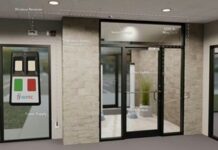Johnson Controls introduces the newest versions of its C•CURE 9000 security and event management platform from Software House to now include greater credential security and flexibility in smart card encoding by integrating with two new smart card technologies.
New personnel and credential management functionalities for the Software House C•CURE 9000 v2.60 SP1 (standalone) and v2.61 (unified with Victor from American Dynamics) adds support for NXP MIFARE DesFire EV1 and EV2 smart card encoding. This allows multiple applications, such as access control, vending, and parking to be combined into a single contactless smart card, with the user in complete control of the card’s memory and key material. To further protect against card tampering, the encoding setup features an optional anti-cloning diversified key, per NXP’s Generic Access Control Data Model.
Fast and secure data transmission is made possible with advanced AES-128 encryption. Both smart code encoding platforms are ideal for transportation, government, education and other vertical markets which require a high level of security and fast credential data transmission speed. MIFARE DESFire EV1 cards can hold up to 28 different applications and 32 files per application. MIFARE DESFire EV2 smart cards, the second evolution of the MIFARE DESFire open architecture platform, can hold an unlimited number of applications and include a proximity check feature to protect against relay attacks, while employing a virtual smart card architecture for privacy protection.
This newest version of the C•CURE 9000 security and event management platform also includes USB webcam support for badging. In addition, visitor management capabilities of the platform have been extended to include multi-language support and the ability to assign a QR code to a visitor that can be used at the self-service kiosk application upon arrival. A visitor simply scans the QR code and the app auto-populates the visitor information into the appropriate fields for quick and easy check-in. The information is then sent directly to the host to notify him/her of the visitor’s arrival











